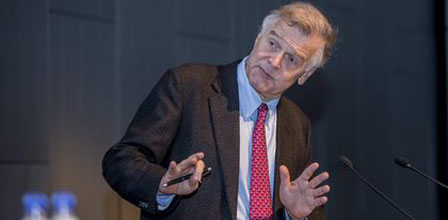Gold: Earlybirds Prepare for a Mania
The continuing avalanche of digitally-created money and nearly-free credit provided to the megabanks “means that a hyperbolic, 1979-1980 style blow-off in the gold market is becoming more likely,” says the FT’s well-known American commentator John Dizard.
Demand for the yellow metal has been supported by a gradual shift from net central bank selling to net central bank buying, and by the interest of professional investors. The broader public has not yet really been drawn into the market. When that happens, it’s likely to produce a repeat of the gold mania seen in the late 1970s.
One friend of mine, who has 90 per cent of his personal wealth in physical precious metals, says gold could eventually soar to above $10,000 an ounce, in perhaps five to seven years’ time, driven by panic over a feared collapse of the global financial system produced by absurdly excessive money creation.
This is not such an extreme viewpoint as you might think. The well-known strategist and commentator Christopher Wood of CLSA Asia-Pacific Markets, for example, recommends that long-term US dollar-denominated investment funds have 45 per cent of their assets in gold bullion and 20 per cent in unhedged gold mining stocks.
Dizard points out that although the miners’ shares have disappointed relative to the metal in recent years, they rose twice as fast in the last quarter.
So far “money flows into gold stocks have been modest, and valuations relative to the cash flows or the net asset values of gold reserves are still fairly low. There hasn’t been any flood of dubious junior mining stocks based on pieces of moose pasture in Northern Ontario or desert in Nevada.” But “no doubt that will all come.”
Interesting recent pointers to rising interest in gold include:
- The four-fold increase in gold imports into China over the past 12 months, to a record 459 tons, accompanied by increasingly aggressive moves by that nation’s mining companies to buy assets in Australia and Africa;
- The continuing rise in holdings by exchange traded funds, which are mainly vehicles for long-term institutions and individual investors;
- The Bundesbank’s reluctant response to public pressure to guarantee the existence of its claimed gold reserves of 3,396 tons (including revealing their physical location in vaults in Frankfurt, New York, London and Paris; and
- The intriguing proposal that individual Eurozone states borrow through issuance of government bonds backed by the collateral of their substantial gold reserves.
Dizard says that gold manias – “or, if you will, crashes in the value of paper money” – tend to occur in three phases:
- A gradual, creeping devaluation of a currency, which can take a decade or so to gather force.
- Then an initial inflating of the gold bubble, followed by a pause and pullback in gold’s price momentum.
- Then a seemingly unstoppable rise.
CopyRight – OnTarget 2012 by Martin Spring




